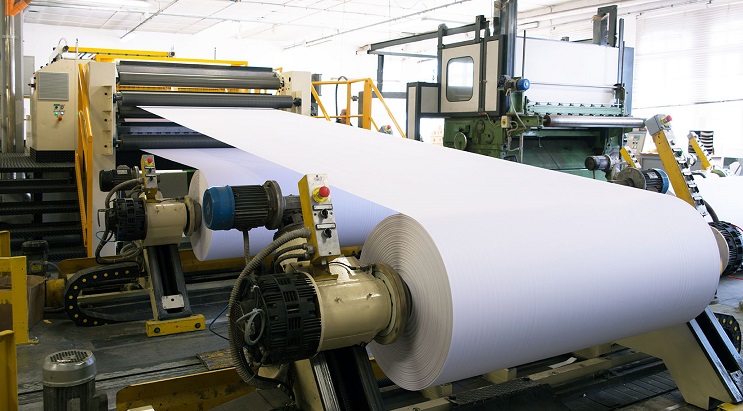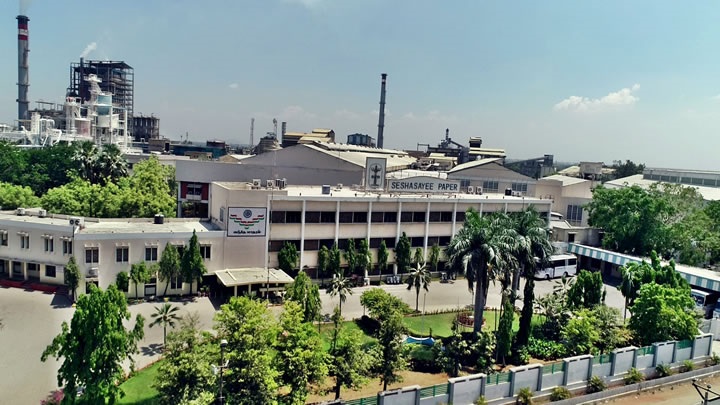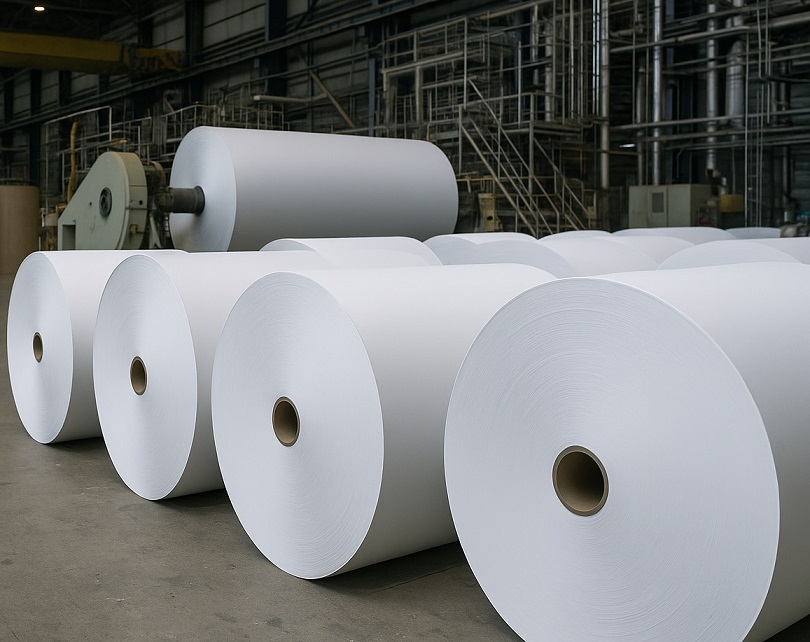FY25 is poised to witness a further 8% net addition (3.3 million MT) to market pulp capacity, resulting in pressure on paper prices, paper industry experienced a contraction of 11% in FY24

FY25 is poised to witness a further 8% net addition (3.3 million MT) to market pulp capacity, resulting in pressure on paper prices, paper industry experienced a contraction of 11% in FY24
-Moderate global demand for paper and paperboard in FY24
-The paper industry in India was valued at INR 1,020 bn in FY23 but experienced a contraction of ~11%, falling to INR 907 bn in FY24
-Defying the global trend, which will see demand in the Writing and Printing (W&P) segment fall in the long term, the market in India is expected to register a CAGR of 4-6% till FY27
The Pulp and Paper Times:
Global demand for paper in FY24 is estimated to have grown by 1-3%. The Writing and Printing (W&P) segment, which witnessed a 0-1 % decline, is expected to see demand fall in the long term due to digitisation, with the world moving to a ‘Print and Digital’ phase. Newsprint demand too experienced a contraction, of 4-6 %. Demand is expected to decline further, with the rise of e-paper readership. On the other hand, demand from the e-commerce segment is expected to drive growth in the paperboard segment by 0-1%. Therefore, long-term demand for paper will be driven by the paperboard sub-segment.
In 2023, the global pulp industry experienced a significant decline in prices due to oversupply and weak demand, with hardwood pulp prices decreasing by approximately 32% and softwood prices by approximately 24%. This oversupply was attributed to the commissioning of lowcost pulp capacity in Latin America, coupled with higher production amid higher downstream inventories and economic challenges in major economies leading to weak demand. There has also been a consistent reallocation of pulp capacity from high-cost geographies to low-cost regions such as Latin America and Indonesia.
In India, the paper industry relies primarily on agro-based raw materials and wastepaper due to limited availability of pulpwood. However, the quality of paper produced from these substitutes is inferior to wood-based alternatives. Additionally, India faces challenges in wastepaper collection and recovery, resulting in lower availability and the need for significant imports. In such a scenario, companies that have secured access to future supplies, along with flexibility in their processes to incorporate various raw material options, will be able to maintain cost efficiency and experience seamless continuity in operations.
INDIAN PAPER INDUSTRY OUTLOOK
The paper industry in India was valued at ₹ 1,020 bn in FY23 but experienced a contraction of ~11%, falling to ₹ 907 bn in FY24. The decline is attributed to reduced realisations caused by cheaper imports despite an increase in demand. Q4 saw a flurry of imports from low-cost Asian countries such as Indonesia, owing to the Red-Sea shipping crisis, which raised the cost of shipping to Europe by up to 60% and increased transit time by up to 15-20 days. Conversely, the crisis also affected the movement of wastepaper from the European Union to Indian players in the recycled value chain.
TISSUE PAPER
The tissue paper market in India is projected to experience an annual growth rate of ~13%, higher than the global and Asia average (CAGR till 2030). This growth is supported by various factors that influence demand. For instance, government schemes like the Swachh Bharat Abhiyan and the Covid-19 pandemic have greatly accelerated the adoption of a healthy and hygienic lifestyle, while also raising sanitation standards. Economic factors such as a burgeoning population of affluent Indians, which is experiencing a double-digit CAGR, has created high growth in categories such as leisure, hotels, recreation, food, durables, retail and medical services. This has accelerated product demand, where premium brands within any category are likely to sustain high growth rates for longer periods, given the increased spending power of ‘Affluent India’
WRITING & PRINTING
Defying the global trend, which will see demand in the Writing and Printing (W&P) segment fall in the long term, the market in India is expected to register a CAGR of 4-6% till FY27. India’s paper industry has been closely associated with the national objectives of literacy, a green India, generating rural employment, and the use of sustainable resources, which is driving growth in this segment.
Increasing consumer awareness and the preference for sustainable solutions is creating significant opportunities for products and solutions that are plastic substitutes. Additionally, the growth of the organised retail sector and the government’s emphasis on education and literacy, with the New Education Policy, has improved the literacy rate. Consequently, more and more students are entering the education system, resulting in sustained volume growth in the W&P segment.
OUTLOOK
• Global influence
FY24 saw a net market pulp capacity addition of 1.6 million MT, resulting in a 4% increase in supply. FY25 is poised to witness a further 8% net addition (3.3 million MT) to market pulp capacity. This is likely to result in a sharp drop in pulp prices, globally, resulting in pressure on paper prices. Although consumption is projected to increase by 1-3%, it is likely that some high-cost capacity in North America and Europe may be phased out. There may be a further capacity increase of 1.6 million MT in FY26. The net effects of this supply-demand gap are estimated to be absorbed in the system by 2027. Excess supply from low-cost manufacturers such as Indonesia and China are adding to pricing pressure in the domestic market.
• Cost implications
Fuel costs are likely to remain range-bound until clarity emerges on the Ukraine-Russia conflict. Similarly, raw material prices are likely to increase further due to a continued demand-and-supply gap, with no additional supplies expected before 2026.
• Demand projections
The W&P segment is expected to experience lower single-digit growth (~4% volume growth vs global degrowth of -0.5%), while the tissue segment is likely to witness a healthy ~13% growth
The above study on the Indian and global paper industry has been extracted form the Orient Paper & Industries’ annual report for FY 23-24
Web Title: FY25 is poised to witness a further 8% net addition (3.3 million MT) to market pulp capacity, resulting in pressure on paper prices, paper industry experienced a contraction of 11% in FY24





 Join WhatsApp Group
Join WhatsApp Group Join Telegram Channel
Join Telegram Channel Join YouTube Channel
Join YouTube Channel Join Job Channel (View | Submit Jobs)
Join Job Channel (View | Submit Jobs) Join Buy Sell Channel (Free to Submit)
Join Buy Sell Channel (Free to Submit) Paper News Headlines Channel (Free to read)
Paper News Headlines Channel (Free to read)















